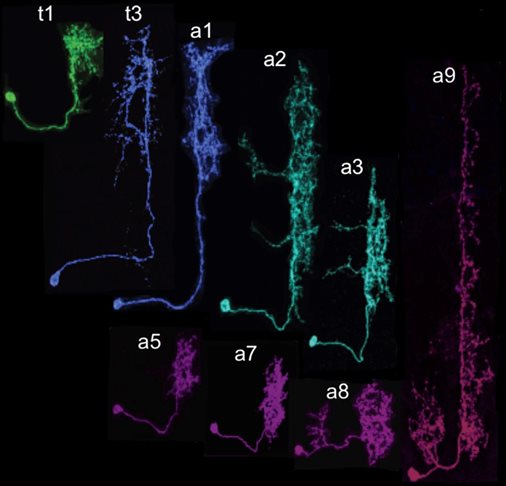The role of Hox genes in the specification of circuits controlling specialised behaviours.
Animals, mouse, fly or humans, generate different stereotyped movements associated with different specialized body parts along their body axes. We, for example breathe (diaphragm), chew (jaws) and walk (legs). The nerve circuits that control these movements are located at different points along the axis of the nervous system. This means that, somehow, as the nervous system develops, groups of nerve cells at different positions are specifically assembled to make the different circuits for these specialised behaviours. How is this controlled? We know that the Hox genes have a role in this process and my experiments are designed to show exactly how these genes control the formation of locally specific patterns of nerve cells required for movement. I will use the fruitfly Drosophila because developmental mechanisms are conserved between different animals and because Drosophila is excellent for genetic and cellular manipulations. Another advantage of the fruitfly is that the different parts of the nervous system arise from similar sets of progenitor cells that are repeated along the anterioposterior axis. So the question I will ask is How Hox genes control the assembly of these of equivalent sets of cells into different specialized networks for specific patterns of movement?
Although the work is aimed at uncovering fundamental principles it has potential to benefit society. It is likely that many diseases of the human nervous system (e.g. schizophrenia, epilepsy and autism) arise from the improper assembly of neural networks early in development. By studying the mechanisms of neural development in flies, we can uncover core principles that could subsequently be used to inform clinical research aimed at understanding the developmental basis of human neural disorders.
